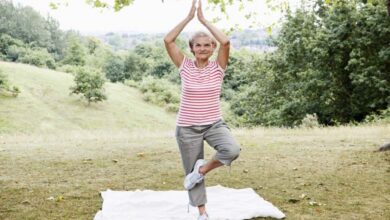Why cold showers can be dangerous in summer

During summer, high temperatures lead many people to seek quick ways to cool down, often turning to cold showers. While cold showers are commonly believed to be an effective method to refresh the body, stimulate circulation, and boost energy, they can also pose significant health risks if taken improperly during hot weather. This article explores why cold showers can sometimes be dangerous in summer, focusing on the physiological mechanisms involved, potential health risks, and practical advice to maintain safe hygiene habits during heatwaves.
-
“For Recovery and Mental Health” – Are Ice Baths Really Effective?
-
5 Common Summer Health Issues and How to Prevent Them
Immediate effects of cold showers on the body
When exposed suddenly to cold water, the body undergoes several physiological reactions. The skin’s blood vessels constrict—a process known as cutaneous vasoconstriction—to reduce heat loss. This response is crucial during cold weather, but in summer, it can lead to counterproductive effects.
Why this reaction can be dangerous in summer
In summer, the body’s core temperature is naturally elevated due to ambient heat and often increased physical activity. To dissipate heat, blood flow to the skin increases, promoting sweating and cooling. However, a cold shower triggers vasoconstriction, suddenly reducing blood flow to the skin and thus hindering heat dissipation.
This abrupt disruption of the body’s thermal regulation can cause several adverse effects:
- Thermal shock: Exposure to very cold water after heat stress can lead to sudden cardiac slowing and breathing difficulties. This shock is particularly risky for individuals with cardiovascular conditions.
- Local hypothermia: Even in a hot environment, extremely cold water can excessively lower skin temperature, disrupting overall thermal balance.
- Muscle cramps: Rapid cooling of muscles may cause painful spasms, especially in athletes or after intense exercise.
- Nervous system reactions: The sudden cold stimulus can provoke excessive nervous responses, leading to dizziness, nausea, or fainting in extreme cases.
-
Unexpected ways summer can damage your skin
-
With the Heat Wave: Tips to Protect Your Children in the Scorching Summer
At-risk groups
Certain populations are more vulnerable to dangers associated with cold showers in summer:
- Elderly people: Their cardiovascular system is often less adaptable, increasing thermal shock risk.
- Children: Their thermoregulatory systems are not fully developed, making them sensitive to abrupt temperature changes.
- Individuals with heart or respiratory disorders: Heat stress can exacerbate their conditions.
- Those with neurological disorders: Increased risk of adverse nervous reactions.
-
How Does Hot Weather Affect Older Adults?
-
Coconut Water or Coconut Milk — Which is Healthier for You?
When and how to take a cold shower safely
It’s important to note that cold showers are not to be avoided entirely in summer; when done gradually and carefully, they can be beneficial. Here are some safety tips:
- Avoid ice-cold water: Opt for cool water that isn’t freezing to prevent shock.
- Gradual adjustment: Start with lukewarm water, then slowly reduce the temperature.
- Avoid immediate post-exercise showers: Allow the body to cool down naturally before showering.
- Avoid exposure to cold air after showering: Prevent drafts that may further lower body temperature.
- Stay hydrated: Drink water before and after the shower.
-
Head Injuries May Reactivate Viruses and Increase the Risk of Neurological Diseases
-
How to Protect Yourself from Widespread Respiratory Diseases this Season
Alternative ways to cool down safely in summer
To avoid risks from cold showers, safer methods to beat the heat include:
- Drinking plenty of cool (not icy) water.
- Taking lukewarm showers.
- Using mist sprays or damp cloths.
- Wearing light, breathable clothing.
- Avoiding direct sun exposure.
While cold showers may seem like a fast and effective way to combat summer heat, they can pose real dangers if misused. Understanding the physiological mechanisms behind thermal regulation and the risks of thermal shock is essential to practicing this habit safely. During heatwaves, a gradual approach combined with complementary cooling methods is advisable to protect health and well-being.












